Media | Articles
Review: Garmin Catalyst
It takes three laps, more or less, for the thing to start talking. Before that, it just sits there, watching you drive.
The device is preloaded with hundreds of tracks. Those circuits are scattered around the world, from heavy hitters like Daytona and Le Mans to small-timers like the half-mile oval at the Nashville Fairgrounds. There are ovals, rovals, road courses, even temporary street courses like Long Beach. Any track not in the software can be added through a relatively simple process—drive a lap with the device running and push a few buttons, and boom, new circuit in the system.
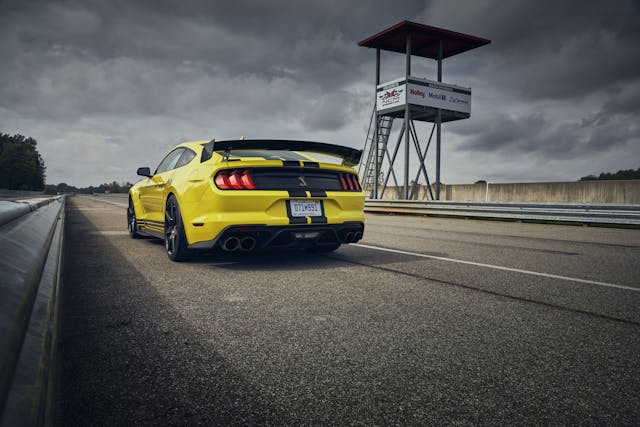
This functionality is not surprising, not with a product of this cost and focus. Also unsurprising: the included 140-degree, 1080p remote camera, or the fact that the device can pull weather data over Wi-Fi, or that the GPS and GLONASS sensors inside the Garmin Catalyst monitor satellite data with 10-Hz positioning to measure your lap in real time.
No, the interesting bit is how the Catalyst will talk to you, in a human-sounding voice. How that voice will encourage—help, coach, nudge—you to drive faster.
The Catalyst presents as a tool but approaches its task in such a new and user-friendly way that it initially feels like a novelty gadget. If you are at all familiar with tools and gadgets, you know that features are never the point with such things; the point is what you actually want to do with those features, and just as important, what the engineers designed those features to do.
Marketplace
Buy and sell classics with confidence

In that light, this $1000 wonderbox is an out-of-the-park home-run. So much so that this website recently purchased two of these devices, at full retail, for staff training.
There are caveats: You have to know what you’re getting into, and what you need—how you work as a driver, and how your personal head works—to get the most from it.
More on those ideas in a moment.

This is essentially a data device, and when it comes to track driving, data devices often masquerade as pro-grade equipment. This is not a pro device, and it doesn’t pretend to be. The Catalyst’s 6.95-inch color TFT touchscreen lives in a tidy and relatively durable plastic housing, framed by a rubberized border only slightly larger than the display itself. The whole assembly looks like a cross between a medium-size fish finder and a ruggedized child’s tablet. The removable bottom cover hides threaded accessory mounts and the Garmin’s primary Micro SD slot, for storing driver data and video. (A 32-GB Transcend-brand SD card is included in the box.) The device’s right flank holds a small power button, a micro-B USB port, a second SD slot, and a mini stereo jack for audio output. On the back are two oval volume buttons, labeled + and – , plus a small speaker port and a 14-pin magnetic quick-connector for attaching to the included windshield mount.

The box also includes options for power cables (USB off a 12V lighter socket or hard-wire leads) and a comprehensive user manual. That small remote camera is about the size of a thumb and twice as deep, its lens housing slightly larger than a quarter. The whole shebang can update its software over Wi-Fi, and it can use that connection to send video and data to Garmin’s Connect fitness-tracker service, for access through a browser or phone app. If you don’t want to run off cabin power, the Catalyst’s nonswappable but rechargeable battery is good for around two hours of life.
Construction gives clues to the intended audience. The housing does not appear water-resistant—exposed terminals and bits of PCB wafer are visible through the various ports—and the screen is too big to fit in an open-wheel car. This is a clearly a durable piece of equipment, but it’s not aimed at a purpose-built and occasionally wet cockpit, where space comes at a premium. (Not that a Catalyst couldn’t be used in a race car, of course; all you have to do is turn it on and drive. The main roadblocks are the packaging, and the fact that the stock magnetic mount won’t pass tech at most club events.)
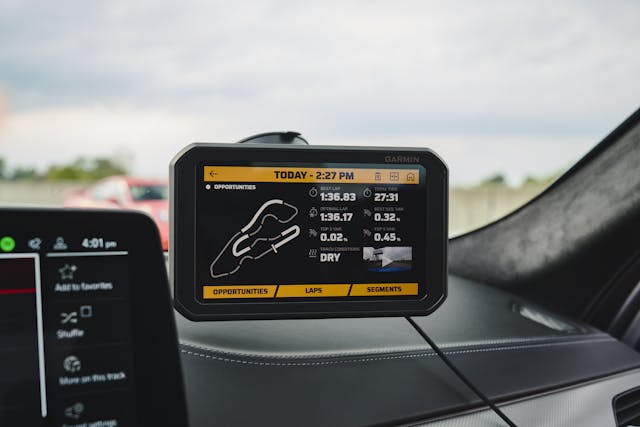
The Catalyst is a lap timer and video logger, and it does those jobs well. Its primary purpose, however, is coaching. Which makes that voice the main draw. Accelerometer data is paired with that 10-Hz (ten times per second) GPS rate to chart speed and distance. At the same time, the Catalyst chews on past performance and what the data suggests your car can achieve, to measure lap consistency and offer ideal predictive lap times.
Once the device has a few laps under its belt and a decent idea of where you sit, the internal speaker or Bluetooth connection starts offering audible advice. A pleasant and only lightly robotic female voice says things like, “In the next right, brake earlier,” or “in the next left, turn in later.” The more you drive and the more information the device gathers, the more specific this advice gets, especially in the Catalyst’s advanced mode, where braking points and line suggestions are offered in feet of distance. The lady-robot voice provides this advice anywhere from a few seconds to whole corners before you need it, theoretically giving the driver time to interpret her suggestions and adapt to changes.

The setup process is simple. The camera connects in quick-release fashion to a semipermanent adhesive mount that you install high and central on the car’s windshield, near the rear-view mirror. The Catalyst’s magnetic data and power plug uses a quick-release suction mount, also meant for the windshield, with a RAM arm for placement. The magnetic plug connects to the camera by USB cable, so you can remove the Garmin from its mount without dewiring camera or power.
On first boot, the software requests a wifi connection, to download updates. After that, the device operates on its own, no Internet needed. A quick tutorial helps with camera aiming and leveling. The softwares asks you to log the driver’s name and car model, then confirm track location, specifying whether the pavement is wet or dry. The name bit is helpful when testing with multiple drivers and vehicles, as we did; the Catalyst can silo their video and data separately, letting you switch between the archives of different users simply by clicking each person’s colored-helmet icon.
The UI is a strength here, equal parts smart and clean. The graphics on that TFT screen are large and bright, easily parsed from across a cockpit, and the touchscreen is sensitive enough to work under gloved hands. When parked, the screen can play video footage under a simple data overlay (speed, lap count, etc.) and show a series of “opportunities,” or moments where improved technique would quicken your lap. You can also ask the Catalyst to focus on one or more of those areas during the next driving session—braking in Turn 4, for example, or a slightly different line in Turn 9.
Finally, the software can serve as a rudimentary video-batching device. The lap-review feature can play back short video clips from the same corner over successive laps, either full-screen or next to a speed graph, allowing you to visually and immediately compare car position with exit speed and technique. This isn’t a deep-dive data review, but it is a clever way to channel key information without veering into overload.

Motorsport data analysis follows a predictable path, and the Garmin is no different: First, it watches to evaluate your consistency. If you’re not consistent, the coaching will work to get you there. If you are relatively consistent, the Catalyst will labor to help you find time—first whole seconds, then tenths of a second, and finally, consistency to those tenths. At certain points in the process, the Garmin’s brain even seems to be experimenting, asking for technique or line changes that might not work out to a faster lap, simply to see if driver and car are a fit. (This is more impressive than it sounds, and possibly the most human part of the device’s behavior.)
Naturally, this kind of coaching will produce greater gains for the novice driver. That said, even our quickest testers found benefit. For those folks, the gains lay in the counterintuitive details that buy tenths—braking a few feet earlier where your gut says later, sacrificing entry speed where conventional wisdom would suggest going faster, and so on. Some of that advice seemed tuned more to car than driver; each of the five vehicles we used for Catalyst testing wanted something slightly different in treatment, even if simply to account for different tire compounds, and the Garmin seemed to pick up on that fairly quickly.

As with any first-generation product, there is room for improvement. The Catalyst’s camera resolution and mount are quite good for a dash cam, but the lens is occasionally too narrow to provide detailed perspective on exact track position in some cars. Nor can you easily or effectively relocate that camera to show tachometer or steering wheel angle, as you might with something like a GoPro.
Similarly, if you prefer to run without earbuds and your track car lacks a Bluetooth stereo or aux-in, the device’s internal speaker is often inaudible, even at full volume, in a well-muffled road car with lowered windows. (More than a few track-day organizations in this country require lowered windows.)
The camera issue is relatively minor, given the Catalyst’s other talents; as for the tach and wheel angle, OBDII compatibility would be an easy fix. Along the same lines, the nerd racer in your narrator would like an option for deep diving on data—a setting that might allow you to access a more detailed set of features—and the ability to connect a smaller and more focused accessory display, for dash placement. This is too smart a device to not be expandable and customizable, to grow with a student or budding racer as their needs change.

Still, perspective helps. Twenty years ago, the lap-data market was limited to pro-racing equipment best understood and operated by engineers. You bought quasi-milspec components intended for the rigors of professional motorsport, and you paid accordingly. Ten years back, the enthusiastic amateur had a few good and affordable options in the space, but most were little more than simple lap timers. The good dataloggers weren’t user-friendly, and the user-friendly ones mostly weren’t any good. Standalone consumer-grade coaching electronics simply didn’t exist.
These days, the Catalyst is often spoken of in the same breath as two other stalwarts of T.C. Mits track analysis—the Harry’s Laptimer phone app ($9 to $30, options depending) and the AiM Solo 2 ($500 to $800, not including external camera). Most track-day paddocks host more than a few Solos and iPhones suction-cupped to windshields; the AiM itself is popular in club-racing circles and built by a firm with a deep background in data acquisition. Each of those devices is useful in a certain environment, and neither is a direct competitor to each other or the Catalyst. But when people discovered we were testing a Catalyst, they mentioned those products, asking after differences.

On that note, some general answers: The Harry’s app is neat but ultimately a novelty, like a lot of phone apps; it works fine as a timer and speed monitor but is held back by limitations of hardware accuracy and form factor. As for the AiM, I have dozens of hours of testing and racing with both the first- and the second-generation Solo, and they’re wonderful products, delivering as their manufacturers promise. The clincher: To get the most out of either an AiM or a Harry’s install requires a commitment of time and effort that most weekend track hobbyists don’t want to give.
All of this gets to the crux of why the Catalyst is such a gift for the average driver: Numbers are only as useful as you make them. Positive change born of motorsport data often requires a knowledgeable eye and a frank driver-engineer relationship. And to be blunt, most track-day folk—and even some club racers—don’t care enough, or simply don’t want to care, about the nuances of even a simple speed-distance trace.
So yes, we bought two of these suckers. To help bring new staff members up to speed, and to promote consistency across our test department. The box is just too good at what it does.

It’s worth noting that this purchase was made only after testing killed our skepticism. Last fall, Garmin was kind enough to loan Hagerty’s editorial division a new Catalyst for evaluation. Over several days at NCM Motorsports Park and Barber Motorsports Park, we plugged that loaner into five high-performance road cars: a 2021 BMW M5 Competition, a 2021 Porsche Cayman GT4, a 2021 Ford GT500, a 2012 Porsche 911, and a 2022 Cadillac CT5-V Blackwing. The five test drivers chosen for this process ranged in skill from rank novice to middle-aged amateur racer and holder of lap records. Each person used the Catalyst to find speed where they didn’t expect, from mere tenths to whole seconds, and each credited the box with helping them think more about the task at hand.
It was fun, they said.
What a novel concept, I said, remembering all those times when I pushed my sound-and-color brain into the realm of hard numbers and had zero fun in the process.

Garmin rose to prominence nearly 40 years ago by building navigation devices for defense customers. That background does not immediately suggest competence in motorsport, though someone who studies data analysis and user interface might beg to differ. More to the point, car people are notoriously tribal, and the Catalyst has been scoffed at in certain driving circles, mostly for what it can’t do.
How silly. In the right environment, this is a remarkable product and a significant leap. Garmin’s efforts won’t replace a human coach or a serious data system, and that bare-bones interface can seem limiting if you have significant experience with either. But the Catalyst is undeniably capable of helping amateur drivers improve, in real time, without guesswork or sorcery.
All you need is a car and some clear air, and a willingness to listen.
***
Garmin Catalyst Driving Performance Optimizer
Price: $1000
Highs: A quasi-human voice and driver coach that works with you in real time, on a race track. Offers genuine lap-speed gains for both novices and the experienced. Clear interface, fun to use.
Lows: Camera lens width means video can be less than useful. Market for peripherals—remote displays, OBDII integration—is ripe but untapped. Not the big-dog data system you’re looking for, if you’re looking for that.
Summary: A unique and genuinely useful answer in an intimidating field that is too often geared toward professionals. (Or even just those pretending to be pro.)
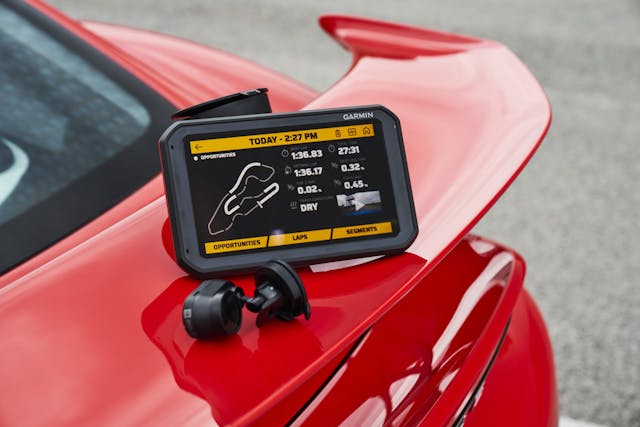








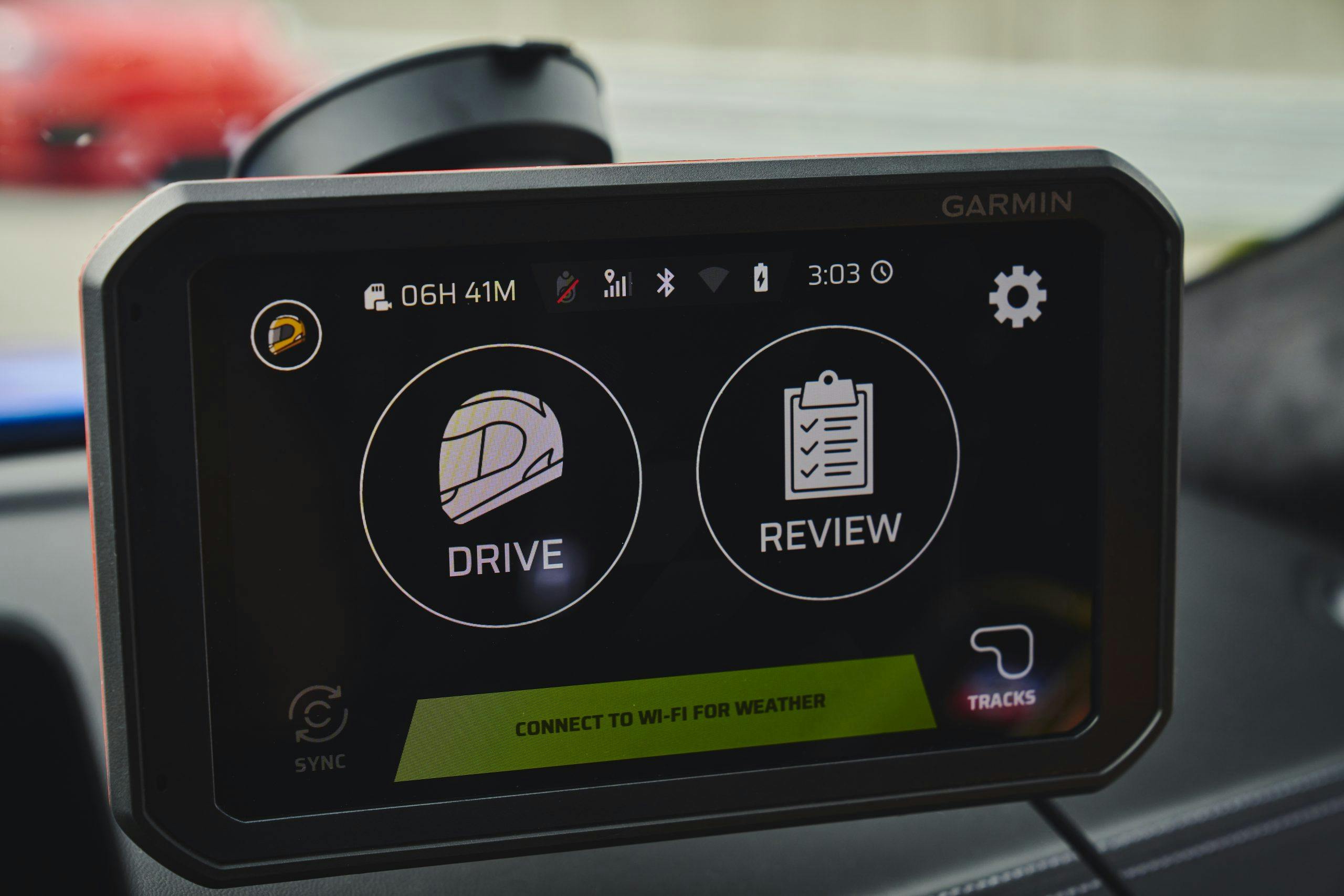
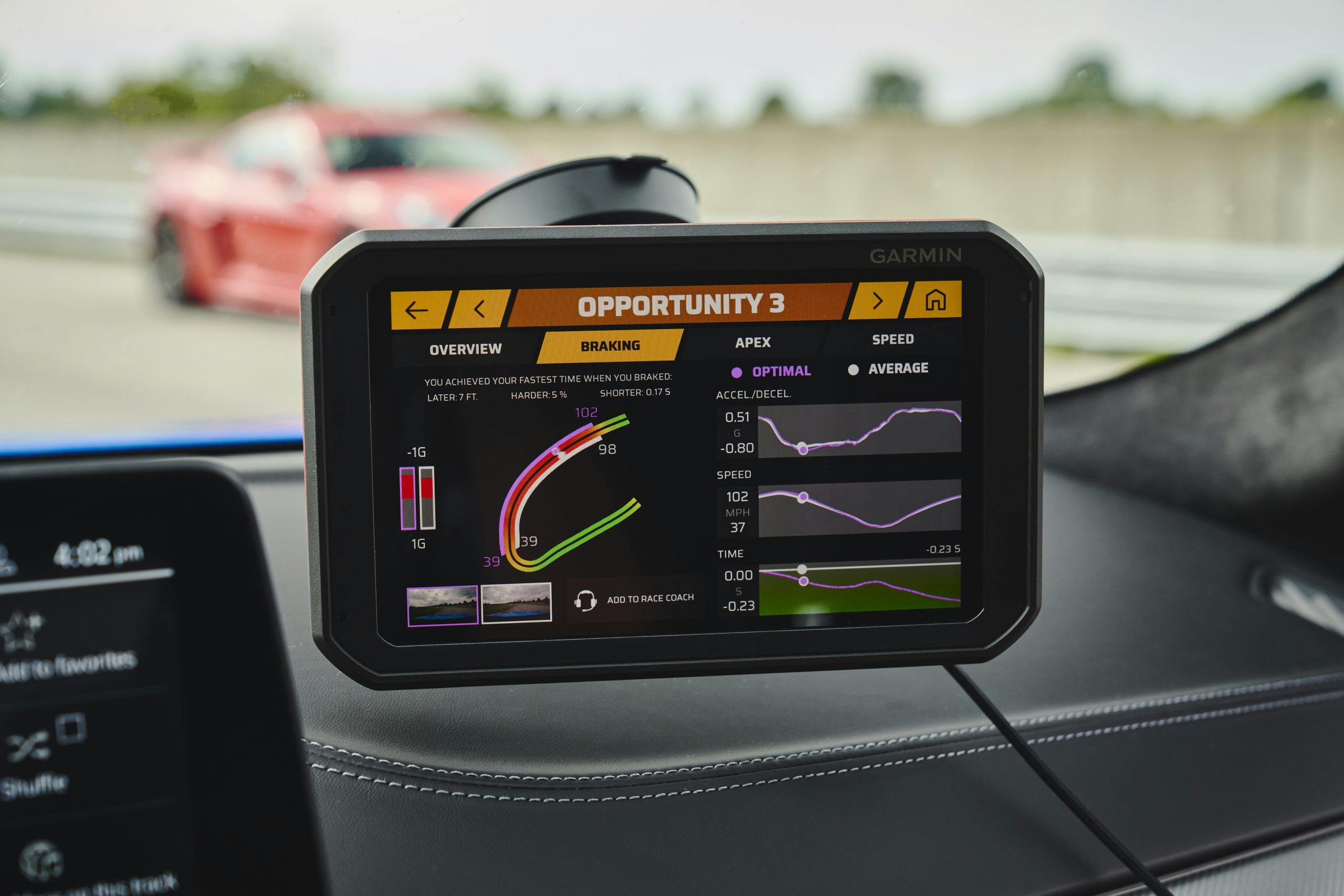




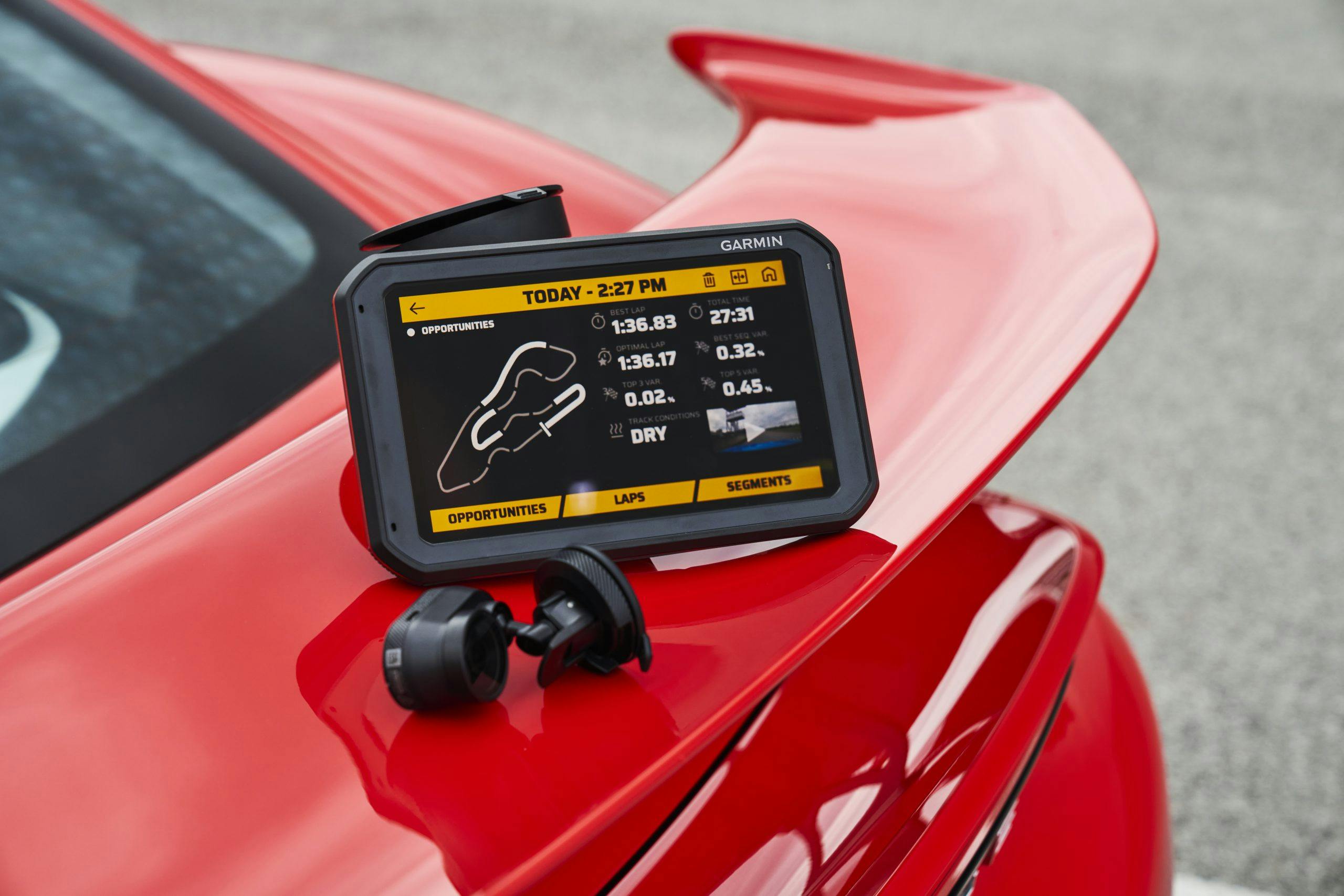
I’m on the cusp of buying one but haven’t been able to find earbuds, either wired or wireless, that seem likely to work with the Catalyst. Can you tell me what earbuds you found that you could hear in a racecar, please?
Hi, Frank! Happy to help.
With noisy / unmuffled cars and race cars, I’ve been able to use the same in-ear units we use for endurance racing. They’re expensive, for what they are, but their foam “earplug” bases (washable) do block enough noise and go deep enough in the ear to work. Try the ones from Racing Radios:
https://www.racingradios.com/products/foam-driver-earpieces-36-stereo
Barring that, their semi-custom molded units are also nice, and easier to keep clean:
https://www.racingradios.com/products/semi-custom-earpieces-19-mono-medium-molded
There are other suppliers; RR is just the first I recall offhand. You’ll have to run an extension for the cable, to reach the Garmin on the dash, but that can be had cheaply enough—they take the same 3.5-mm mini plug used by most consumer-grade wired headphones.
Good luck!
thanks for the use for review, these are on sale for $899 right now so I’m going to grab one.
Hello and good morning from Germany!
Thank you for the article written without frills.
You have a suction cup holder on the camera. Normally there is only one glue on it.
Is the original or did you add it later?
Cheers!
Ron
I am close to buying one, but I have some questions. I need to be able to mount the camera on a roll bar. Is that possible? Is it possible to hear the voice assistant when playing back the video. I’m not sure I want to hear a voice while I’m racing, but it could be useful in playback mode. Lastly, are there any other cameras that will work with the system? The included camera seems to have a rather narrow field of view. Thank you.